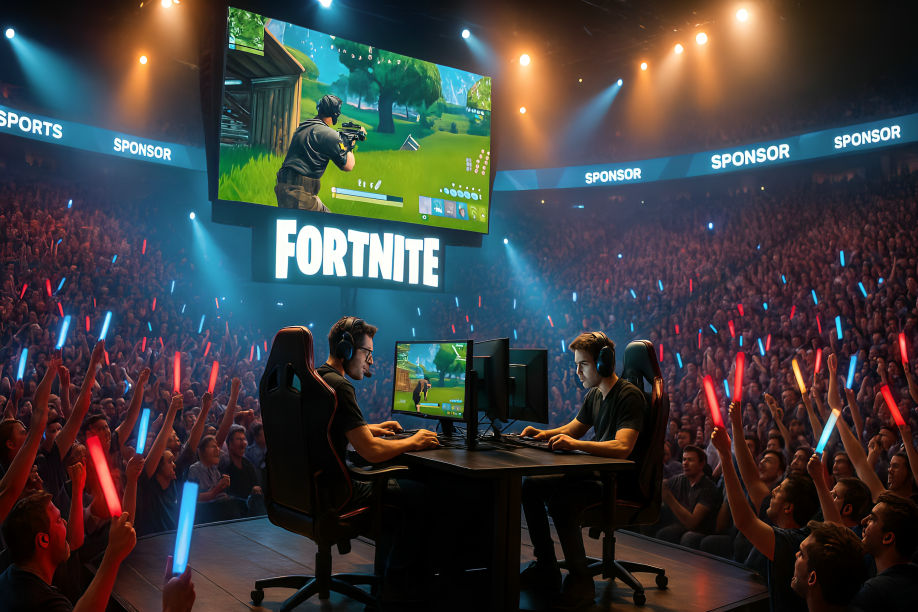The Evolution of Esports: From Niche Hobby to Global Phenomenon

Insights into the Rapid Growth, Key Players, and Future Trends in Professional Gaming
In the ever-expanding universe of digital entertainment, esports has emerged as a powerhouse, captivating millions worldwide with its blend of skill, strategy, and spectacle. What began as informal competitions among friends in arcades has transformed into a multi-billion-dollar industry, complete with professional leagues, celebrity athletes, and massive global audiences. As we delve into this evolution, it’s clear that esports is not just a trend but a cultural shift that’s reshaping how we view sports, entertainment, and even education. For those seeking the latest insights and in-depth analyses, resources like videogamingpros.com offer a treasure trove of articles on top players, game strategies, and industry news.
The Humble Beginnings: Roots in Arcade Culture and Early Tournaments
The story of esports dates back to the 1970s and 1980s, when video games first captured the public imagination. Pioneering titles like Space Invaders and Pac-Man drew crowds to arcades, where high-score challenges became impromptu contests. The first recorded video game competition was held at Stanford University in 1972, where students battled it out in Spacewar!, a rudimentary space combat game. Prizes were modest—a year’s subscription to Rolling Stone magazine—but the event laid the groundwork for what would become a competitive ecosystem.
By the 1990s, the rise of personal computers and consoles like the Nintendo Entertainment System fueled organized tournaments. Games such as Street Fighter II and Doom introduced multiplayer elements that encouraged head-to-head rivalries. The establishment of the Cyberathlete Professional League (CPL) in 1997 marked a pivotal moment, offering cash prizes and attracting sponsors. These early events were niche, attended mostly by dedicated gamers, but they planted the seeds for professionalization. Viewership was limited to in-person audiences or grainy VHS recordings, a far cry from today’s high-definition streams.
As broadband internet proliferated in the early 2000s, esports began to gain traction globally. South Korea emerged as a hotspot, with StarCraft: Brood War becoming a national obsession. Professional teams, or “clans,” formed, and televised matches drew viewership comparable to traditional sports. This period also saw the birth of platforms like Twitch (originally Justin.tv), which democratized broadcasting and allowed anyone to stream their gameplay. The transition from local LAN parties to online global competitions was underway, setting the stage for esports’ explosive growth.
The Boom Era: Mainstream Acceptance and Economic Surge
The 2010s witnessed esports’ meteoric rise, propelled by technological advancements and shifting cultural attitudes. Games like League of Legends (LoL), Dota 2, and Counter-Strike: Global Offensive (CS:GO) became staples, with annual world championships offering prize pools exceeding $30 million. The League of Legends World Championship, or “Worlds,” routinely fills stadiums with tens of thousands of fans and garners hundreds of millions of online viewers—numbers that rival the Super Bowl.
This surge wasn’t accidental. Major investments from tech giants like Amazon (which acquired Twitch in 2014 for nearly $1 billion) and traditional sports organizations fueled the industry. Franchises such as the NBA’s Golden State Warriors and soccer clubs like Paris Saint-Germain launched esports divisions, blurring the lines between physical and digital athletics. Celebrity endorsements from figures like Drake and Shaquille O’Neal further legitimized the scene, attracting mainstream media coverage.
Economically, esports has become a juggernaut. According to industry reports, the global market was valued at over $1.5 billion in 2023, with projections soaring to $4.3 billion by 2027. Revenue streams include sponsorships, merchandise, ticket sales, and media rights. Brands like Red Bull, Intel, and Coca-Cola sponsor teams and events, recognizing the lucrative millennial and Gen Z demographics. Moreover, esports has created diverse career paths beyond playing: coaches, analysts, casters, and content creators thrive in this ecosystem.
One standout example is the Fortnite World Cup, which in 2019 awarded $30 million in prizes, with 16-year-old Bugha taking home $3 million. Such stories highlight how esports democratizes opportunity—talent can emerge from anywhere with an internet connection. However, this growth hasn’t been without challenges. Issues like player burnout, cheating scandals, and the need for better governance have prompted organizations like the Esports Integrity Commission to enforce standards.
Key Players and Teams Shaping the Landscape
At the heart of esports are the athletes whose prowess inspires legions of fans. In games like Fortnite, players like Peterbot have dominated leaderboards in 2025, showcasing unparalleled building and aiming skills. Similarly, in League of Legends, legends like Faker (Lee Sang-hyeok) from T1 have become household names, with careers spanning over a decade. These pros aren’t just gamers; they’re strategists, often training 12-14 hours a day in team houses equipped with state-of-the-art setups.
Teams like Team Liquid, Fnatic, and Cloud9 represent the pinnacle of organization, with rosters spanning multiple titles. In Rainbow Six Siege, data-driven strategies have revolutionized gameplay, allowing teams to analyze opponents’ tendencies in real-time. Platforms providing live stats have enhanced viewing experiences, turning passive watchers into engaged analysts. For detailed breakdowns on these players and strategies, videogamingpros.com features articles like “Top Fortnite Players in 2025: Peterbot Leads the Pack” and “Master Rainbow Six Siege with Advanced Stat Analytics,” offering valuable insights for aspiring pros.
Beyond individuals, indie developers like Blue Mammoth Games have made waves in esports with titles like Brawlhalla, proving that success isn’t reserved for AAA studios. Niche communities, such as those around GameHunters, diversify experiences by blending hunting simulations with competitive elements, appealing to a broader audience.
Streamers also play a crucial role. Figures like IWillDominate, who transitioned from pro LoL player to top Twitch streamer, bridge the gap between competition and entertainment. Their content educates newcomers while building communities, often amassing followings in the millions.
Technological Innovations Driving the Future
Looking ahead, technology is poised to elevate esports further. Virtual reality (VR) and augmented reality (AR) are integrating into games, creating immersive experiences. For instance, VR esports tournaments in games like Beat Saber test physical agility alongside digital skills. Artificial intelligence (AI) is another game-changer, with tools analyzing gameplay to provide personalized coaching.
Blockchain and NFTs have entered the fray, enabling true ownership of in-game assets. Play-to-earn models, popularized by games like Axie Infinity, allow players to monetize their time, though regulatory scrutiny looms. 5G networks promise lag-free global competitions, expanding accessibility in regions like Africa and Southeast Asia.
Sustainability is emerging as a focus, with events adopting eco-friendly practices amid climate concerns. Additionally, esports is infiltrating education; universities offer scholarships for gamers, and programs teach skills like teamwork and problem-solving through gaming.
Challenges and Ethical Considerations
Despite its promise, esports faces hurdles. Mental health issues among players, exacerbated by grueling schedules, have led to initiatives like mandatory breaks and counseling. Diversity remains a concern; while female participation grows with stars like Geguri in Overwatch, the scene is predominantly male. Efforts like women-only leagues aim to foster inclusivity.
Cheating, via aimbots or doping, threatens integrity, necessitating robust anti-cheat systems. The industry’s reliance on volatile sponsorships also poses risks, especially in economic downturns.
The Global Impact and Cultural Shift
Esports’ influence extends beyond screens. It’s fostering global connections, with fans from diverse backgrounds uniting over shared passions. In pop culture, movies like Free Guy and series like The Queen’s Gambit (chess-adjacent but inspirational) reflect gaming’s mainstream appeal. Even the Olympics has flirted with inclusion, hosting esports exhibitions.
Economically, it’s boosting tourism through events like EVO in Las Vegas or The International in various cities. Socially, it’s challenging stereotypes—gamers are athletes, strategists, and entertainers.
As we stand on the cusp of 2026, esports continues to evolve. With advancements in metaverses and AI, the line between virtual and real worlds blurs further. For enthusiasts eager to stay ahead, sites like videogamingpros.com provide timely updates on everything from live stats in LoL to indie successes in esports.
In conclusion, the journey from pixelated arcades to sold-out arenas underscores esports’ resilience and appeal. It’s more than a hobby; it’s a phenomenon redefining entertainment, competition, and community. Whether you’re a casual player or aspiring pro, the world of esports invites you to level up.








